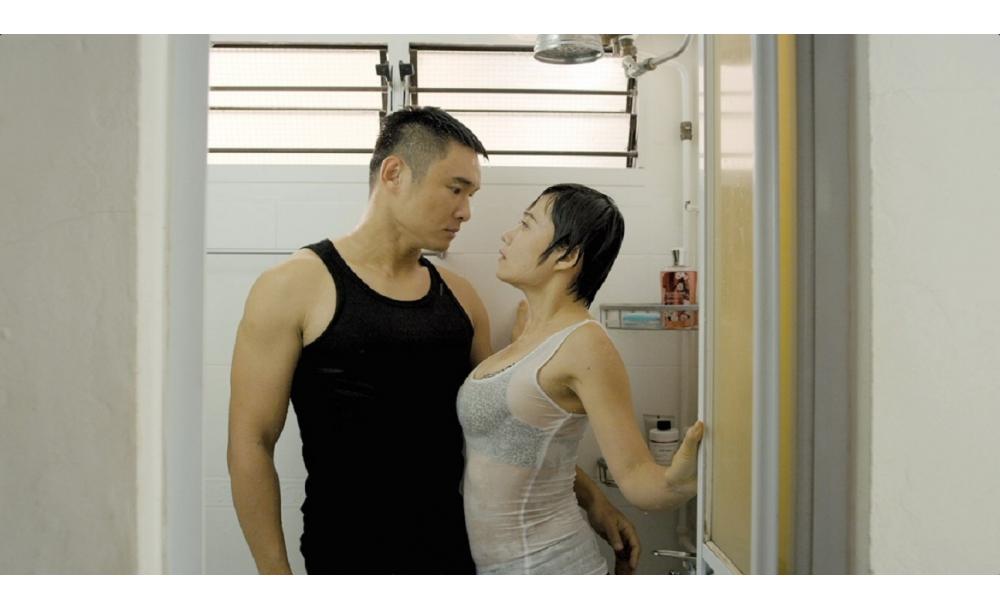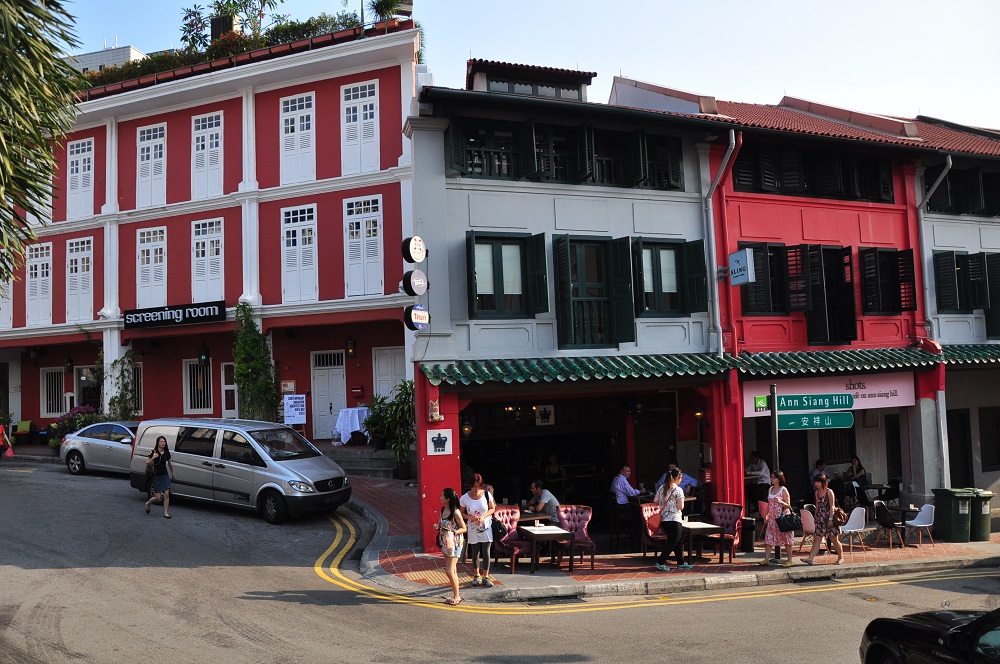Last week, a Facebook group of “concerned citizens” took to the Internet to protest the M1 Singapore Fringe Festival, suggesting that some of the programs in the line-up are “pornography […] disguised as art”, in reference to Undressing Room by Singaporean artist Ming Poon and Naked Ladies by Canadian artist Thea Fitz-James. They’ve also unceremoniously attacked Sean Tobin, the festival’s artistic director. We took the occasion to have a chat with Tobin. The West Australian native made Singapore his home after moving here as a fresh graduate back in 1993, trained as a drama teacher. Besides being a forward-thinking artistic director who pushes the boundaries, he is also the head honcho for the faculty of theater at SOTA, and has worked with Art 3 International, TOUCH Arts and The Necessary Stage in his more than two decades of experience. Here, he talks about his life before Singapore, the current state of the arts scene and of course, the Fringe Festival.
Tell us a little bit more about your life back in Australia before coming here.
I grew up as a bit of a strange loner. I’d always loved stories, acting, singing, creating. I have always loved nature and been drawn to social concerns and causes. I have always had a bit of a superman complex, convincing myself I can save the world, or try make it a better place, through my teaching and my theater-making. A lot of people tell me I am very Singaporean in nature—sometimes in my thinking, my accent and my use of language; my busyness and pragmatic thinking. But I also think I still carry a lot of the traits of a person that has grown up in a small city by the beach. I am sometimes reminded that my sense of humor is very much connected to my Australian and Irish roots. I am quite cheeky and playful and irreverent at times. Those aren’t what we would think of as typically Singaporean traits, I guess.
Why, of all countries, did you choose Singapore?
The moment I finished my degree, I was offered a job with Act 3 International. I jumped on the opportunity because I was just excited to see the world and to teach and make theater. At first I thought I would only stay here a couple of years, but I’ve stayed on for my whole working life. I fell in love with the place. Most of my friends are here. I made a family here. I have made a life of living and working in Singapore. There is a lot to love about this beautiful place.
As the head of faculty for an arts school in Singapore, what’s your take on the relationship between the government and the arts and artists/performers in Singapore?
That’s a big question. There is a lot I could say in response to that. What is most important to acknowledge is that the government is very serious about its investment in the arts. It has pumped so much resource into building an arts scene. SOTA and the other arts institutions here, the various festivals and arts centers are all a result of a government very determined to invest in creative capital. There is a continual growth in quality and quantity. It’s very exciting. We are still relatively young and in some ways still finding our feet, but we have a lot to be proud of. The scene here is very fertile and dynamic in so many ways.
How do you juggle both the arts and teaching?
I cannot imagine doing without one or the other. For me, it’s a symbiosis. I am really lucky to be working for an arts school that recognizes the value of letting its staff keep up their arts practice while still teaching. It does take careful juggling, to ensure I manage both responsibilities well, and still have time and energy for my family and sometimes some sleep. I am definitely not the only one doing this. It’s really part of the cultural terrain here, for people to be wearing at least two hats. The scene is filled with super pro-active multi-tasking professionals who really care for the country and for their disciplines in arts and education. I am just one of them. I also must say I have a great team working with me at both SOTA and M1 Singapore Fringe Festival.
You’ve been here for more than 20 years, taking up various roles within the arts circle. How has the local arts scene evolved over the past two decades?
There are a great deal more arts professionals, and a great deal more arts venues and platforms. I think our audiences have been slowly and steadily growing. And when I say “growing” I mean not just in numbers, but also in level of appreciation for the arts. We are slowly developing a sophistication of taste and an appreciation for a wide range of arts practices.
What do you hope to achieve with the M1 Singapore Fringe Festival?
For me, it’s about a uniquely Singaporean celebration of creative risk and experimentation. It’s a festival where you have a chance to enjoy affordable progressive arts experiences, both from Singapore and around the world. It’s a space for alternative contemporary voices and aesthetics. And I think it’s important that the works are engaging with current social concerns, locally and globally. The festival is a platform to highlight progressive and independent artists and their practices. It should cultivate more ongoing appreciation and support for such artists and such works. Our scene has its roots in experimentation. We need to ensure that as we mature and expand, we don’t lose touch with our roots as innovators. The Fringe Festival is here to help ensure that we don’t become so pragmatic, sleek and ambitious that we forget about the value of boldness and risk-taking.
What are some of the challenges you’ve faced with the coming festival?
My biggest problem this year was having to turn away works that we did not have the capacity to present. Every year the number of proposals increase in number and in quality. There is not enough time and space for all of them. It’s awful saying no to good artists and good works. On the flip-side of that, it is encouraging that so many people believe in the festival and that there is so much great work sprouting up in Singapore and of course so many people around the world who want to come and share their work with us.
Four of the shows slated to run have already created conversations ahead of the festival. How far are you willing to push the boundaries, and do you feel Singaporeans aren’t ready for it?
Our job is to respond to society and surface questions. It’s not about trouble making. I guess in the process you will ruffle some feathers, however, even if you don’t intend to. What’s important to me is how we can all keep learning to actively listen to each other, respect differences, withhold judgment of each other, and sometimes agree to disagree. There are lots of systems put in place to help regulate these things in Singapore. In that sense, risks will always be very calculated, measured and moderated.
For me, it’s ultimately a good sign that there is anticipation in the lead up to the festival. It’s just a sign that people care, and are invested. Conversations will continue throughout the festival and beyond it. That’s what any important arts work should do: spark dynamic conversation. Some audiences will be more ready than others. Arts will never be a one-size-fits all. It’s probably not art if it suits everyone. As for pushing the boundaries, it’s something that all artists do as part of their work, to varying degrees.
I guess this year’s program looks a little more provocative than usual because of the theme, “Art and Skin”. So there is a higher proportion of skin in the festival. Each year has a different theme and the theme surfaces very different work. 2018 and 2019 will be different again.
What has been one of your biggest achievements in your career?
I don’t think about it much. But I guess I would say my biggest achievement is simply in having stayed here for so long, and connecting so closely and deeply with the scene here, as an artist and educator.
What do you think Singapore’s art scene is lacking?
I don’t really focus on the lack, because the scene is so abundant in many ways. But there are areas for potential growth, which will take time to realize. I think there is a general need for more physical space for artists to experiment, create and craft their work. I think we can do more to keep promoting our works internationally, to ensure that Singaporean artists are part of the larger cultural terrain. I think we can afford to slow down a bit, and focus less on churning out events, and a little more time and energy on taking stock, and ensuring our roots are always sinking deep, and that we are honing our craft, and maintaining strong ties with each other and with our audiences and partners. I do think too that we will need to see greater corporate sponsorship of the arts. M1 is an amazing faithful sponsor who has been so generous in supporting Fringe, and has expanded their support to the Chinese Theatre Festival, Contact Festival and the Theatre Awards. There are some other great sponsors too. But for the arts to be truly sustainable long term, we will need to see more. There are other potential growth areas too, like audience expansion, but those really will take time to keep cultivating. They are not things we will see shoot up so fast over night. Censorship and regulation will continue to be a point of tension in Singapore, but again it’s something that just slowly and steadily has to be managed.
What do you value most about arts, in Singapore’s context?
Two things. Firstly, the variety of arts options, in terms of different forms, styles and traditions. Secondly, the amazing people working in the arts. Singapore really should be very proud of its very passionate, dedicated arts professionals. There are so many people sowing a lot of love, blood, sweat and tears into their work, and into helping to make Singapore a beautiful place to live, a place that’s diverse and lively, and a place that connects deeply with its heritage, but is also open to innovation and progress.
How do you think you can further contribute to the local arts scene?
I must say I think I am maxing myself out! I couldn’t possibly do another single thing right now. For now I am really enjoying supporting artists and emerging artists through my work at SOTA and the Fringe. I’ve put on hold writing and directing my own independent work for now, because this work is deeply satisfying and very important as it is. It’s hard work but its deeply rewarding. I think anyone who is in a line of work where they have to give a lot socially, emotionally and creatively, we know that the work gives back to you, as much as you give to it.
How would you describe the extent your investment in Singapore?
I am bad with numbers but I really give 101% to everything I do. I think anyone who works with me at SOTA and in the Fringe can vouch for that. I have given my whole life to the country, and I have no regrets. I am so thankful to have been embraced and appreciated here.
Check out what you can expect at the upcoming M1 Singapore Fringe Festival on Jan 4-15.





